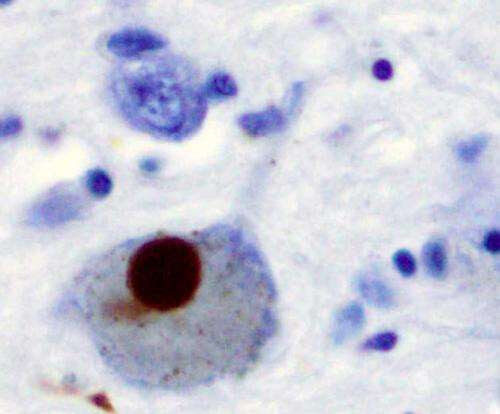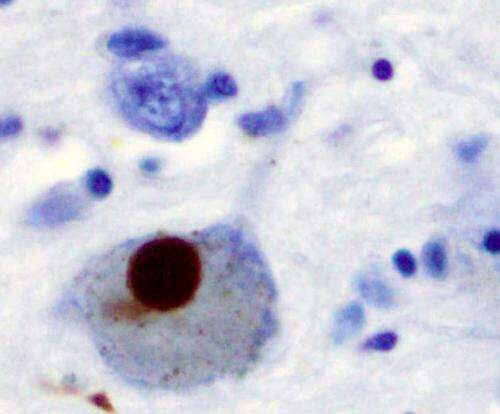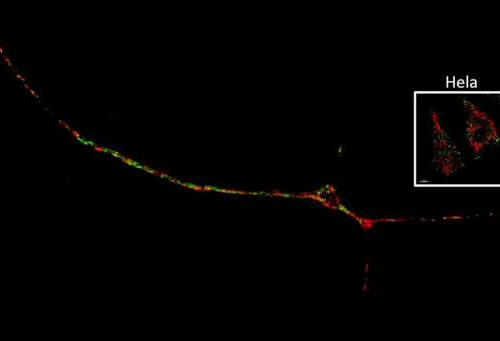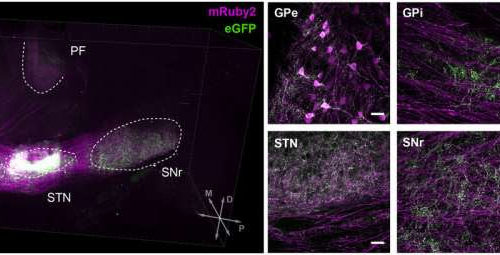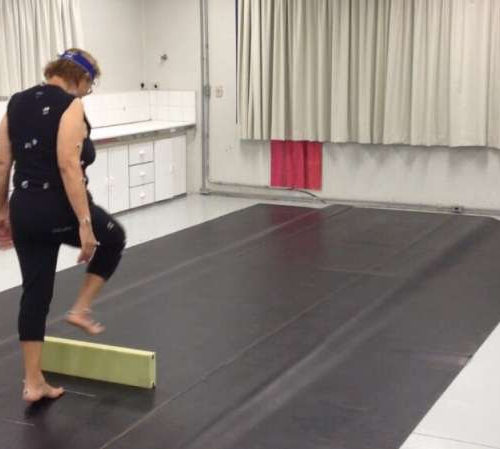by Brigham and Women’s Hospital Immunohistochemistry for alpha-synuclein showing positive staining (brown) of an intraneural Lewy-body in the Substantia nigra in Parkinson’s disease. Credit: Wikipedia A key driver of patients’ well-being and clinical trials for Parkinson’s disease (PD) is the course the disease takes over time. However, nearly all that is known about the genetics of...
Tag: <span>Parkinson’s disease</span>
New model may explain the mystery of asymmetry in Parkinson’s disease
IOS PRESS IMAGE: A) SCHEMATIC REPRESENTATION OF IMPORTANT CONNECTOME DETAILS IN PARKINSON’S DISEASE (PD). B) BRAIN-FIRST PD: THE ASYMMETRIC DISTRIBUTION OF ALPHA-SYNUCLEIN PERSISTS INTO LATER DISEASE STAGES. C) BODY-FIRST PD: THE SYMMETRIC ALPHA-SYNUCLEIN PATHOLOGY LEADS TO MORE SYMMETRIC MOTOR SYMPTOMS. CREDIT: JOURNAL OF PARKINSON’S DISEASE. Amsterdam, April 28, 2021 – Parkinson’s disease (PD) is characterized...
What Parkinson’s disease patients reveal about how art is experienced and valued
by Perelman School of Medicine at the University of Pennsylvania Immunohistochemistry for alpha-synuclein showing positive staining (brown) of an intraneural Lewy-body in the Substantia nigra in Parkinson’s disease. Credit: Wikipedia Art appreciation is considered essential to human experience. While taste in art varies depending on the individual, cognitive neuroscience can provide clues about how viewing art...
Interaction of mitochondria and lysosomes key in Parkinson’s disease
by Will Doss, Northwestern University A tiled image of a single neuron showing the scale of a neuron compared to HeLa cells. The cell body of a dopaminergic neuron is smaller than regular somatic cells, but its neurites are very long in their length, which is one reason why different organelle dynamics were observed in sub-compartments...
Parkinson’s disease: Wearable sensors to track symptoms
by Giorgia Guglielmi, Ecole Polytechnique Federale de Lausanne Distribution of gait speed at home and the average values of the gait speed for the clinical assessments for each patient. Credit: npj Parkinson’s Disease (2021). DOI: 10.1038/s41531-021-00171-0 EPFL scientists have developed algorithms that, combined with wearable sensors, could help clinicians to monitor the progression of Parkinson’s disease and assess...
Study identifies two neuronal populations associated with symptoms of Parkinson’s disease
by Ingrid Fadelli , Medical Xpress Credit: Lilascharoen et al. Parkinson’s disease is a progressive neurodegenerative disorder that manifests itself through a diverse range of motor and non-motor symptoms, including shaking and stiffness of the limbs, as well as difficulties in maintaining balance and coordination, walking and talking. As the disease progresses, these symptoms typically...
Botox sheds light on ‘inner workings’ of the brain, may unlock treatments for Parkinson’s disease
by Study FindsShare NEW YORK — Botox is best-known for its “fountain of youth” effects on an aging face, but scientists have uncovered a new use for the toxin. Researchers at New York University say Botox helps to reveal the inner workings of the brain — which could lead to treatments for Parkinson’s disease. The botulinum toxin shows...
Study shows why crossing obstacles is difficult for patients with Parkinson’s disease
by FAPESP The scientists detected incapacities related to gait timing and foot placement. Their discoveries serve as a basis for the development of an exercise protocol that mitigates the difficulty. Credit: Movi-Lab A multidisciplinary research group affiliated with the Department of Physical Education’s Human Movement Laboratory (Movi-Lab) at São Paulo State University (UNESP) in Bauru, Brazil, measured step...
Rates of Parkinson’s disease are exploding. A common chemical may be to blame
Researchers believe a factor is a chemical used in dry cleaning and household products such as shoe polishes and carpet cleaners ‘The EPA estimates that 250 million pounds of TCE are used annually in the US.’ Photograph: Justin Kase/Alamy Stock PhotoWed 7 Apr 2021 09.04 EDT Asked about the future of Parkinson’s disease in the US,...
An amyloid link between Parkinson’s disease and melanoma
by American Chemical Society Immunofluorescence images show that some α-synuclein and Pmel17 are in the same locations in human melanoma cells. Credit: Dexter Dean, Ph.D. On the surface, Parkinson’s disease—a neurodegenerative disorder—and melanoma—a type of skin cancer—do not appear to have much in common. However, for nearly 50 years, doctors have recognized that Parkinson’s disease patients...

